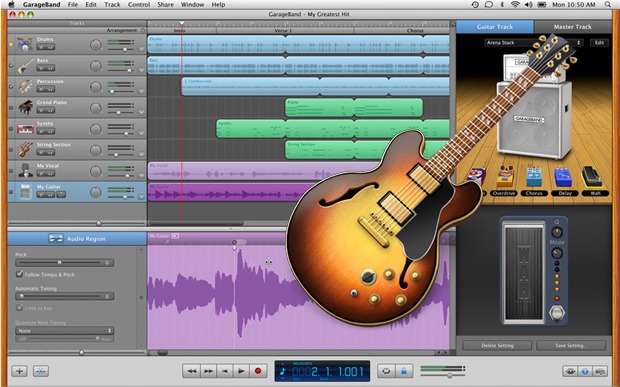

- Garageband piano for free#
- Garageband piano install#
- Garageband piano plus#
- Garageband piano professional#
The iZotope Ozone 9 Elements does a pretty good job on your tracks. Limited functionalities if compared to the more expensive versions.The imager, while rarely used in the mastering process, is also useful for single instruments as a natural doubling effect.The plugin also features a powerful equalizer.This ensures your track is at the optimal level for streaming services. You can manually set how loud you want your master to be in Lufs.
Garageband piano professional#
Garageband piano for free#
One of the benefits is that it is significantly more affordable: the Ozone 9 Elements is usually on sale for $20 and is even given for free by iZotope on some special occasions so keep an eye out. The iZotope Ozone 9 Elements offers a stripped-down design if compared to the Standard and Advanced versions, but it is still pretty capable. The 9 Best Garageband Plugins – Reviewed in Detail 1. 9 Best Garageband Pluginsĩ Best Garageband Plugins – Reviewed in Detail Tip: Also take a look at our Best VST Plugins article to find even more options.

The process is also the same for Logic Pro.
Garageband piano install#
We will also show you how you can install these AU plugins on GarageBand. Some of them are paid, some are free so there is something for every budget. From multi-effects to synths, drum machines, and guitar amp simulators. In our best Garageband plugins article, we will cover different types. There are a lot of audio unit plugins on the internet that are compatible with this DAW. Plugins are tools that can be used with any DAW to improve your sound quality by adding unique effects and instruments or giving you the opportunity to do what you couldn’t before. However, even the best studio needs some help every now and then. Teens won’t follow you blindly like most kids do, they need activities like this that give them a reason to learn what they’re learning.With Garageband, you can create professional-level music without having to buy any additional software. This is not only awesome and super fun, but it reinforces the importance of solid scale knowledge. Use the newly composed track as backing music for your teen to improvise over. You can stop here or you can take it one step further… Jamming Time You can tweak the volume of each track on the track screen by pressing the third button from the top right corner when the track is selected. Keep adding smart instruments until your student is satisfied with their track. When you’ve experimented enough you can record this part (just like you did with the live piano). Play around with all the cool features together. Drums or bass is often a good place to start. They’re all awesome, so it doesn’t matter which one they choose.
Garageband piano plus#
Add another track using the plus sign in the bottom left corner.Īsk your student which smart instrument they would like to add.


Press the button with lots of rectangles (not the one with three squares) at the top left of the screen. Now for the really fun part! This is the part that will really bring the cool factor for your teen students. You can undo and record again until your student is happy with it. I find 4 bar loops work very well but you can do as many as you like depending on the chord progression your student has designed. Set the number of bars and the tempo you want. Start a new file and select the audio recorder. They need to keep ownership of the music. If they’re having trouble make some suggestions but don’t get too involved. Have your teen play the root note in their left hand and chords in their right hand and just mess around with some beats. Now they’ve settled on their chords, play around with some nice rhythms. Allow your student to choose freely from these chords – they’ll all sound good! Just have them experiment with different orders and combinations until they’ve settled on their favourite. Now you have the 6 chords to choose from to create your chord progression. Highlight F, the keys either side of it, and the relative minors of those keys. I ask my student to choose a key signature, any key signature! Let’s say they chose F major. I have the major and minor circle of fifths at the top of my teen assignment sheet so I start there.


 0 kommentar(er)
0 kommentar(er)
